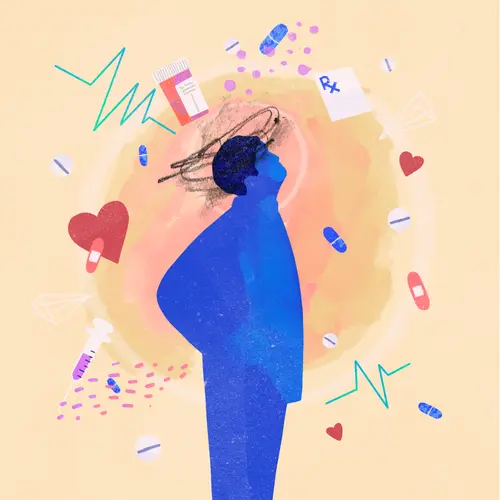You’ve just come home from your annual checkup, and this time, the doctor says your blood cholesterol levels are a little high. There’s no reason to panic. More than a third of your fellow Americans have the same problem.
But too much of the fatlike substance can build up in your arteries. It can block your blood flow, make you more likely to get dangerous blood clots, and put you at greater risk for heart attack and stroke.
Yes, there are medications that can help you bring your levels to a healthier range. But even if your doctor prescribes one for you, you still need to make some adjustments in your everyday life to get your cholesterol under control.
So where do you start?
Diet Is Key
The first thing you need to do to improve your health is to change what you put into your body. You can lower your cholesterol by swapping out certain foods for healthier choices.
Start by loading your plate with plant-based foods like fruits, vegetables, whole grains, and beans. Not only are they low in cholesterol, they’re high in fiber. Foods with fiber can help improve your cholesterol levels and lower your odds of getting:
- Heart disease
- Stroke
- Obesity
- Type 2 diabetes
Fiber also helps fill you up, which might make you less likely to reach for unhealthy snacks.
Some other cholesterol-friendly choices to put on your plate are fish, nuts, low-fat dairy, and lean poultry.
Here are some more key points to understand about your diet and cholesterol.
Eating foods with a lot of saturated fat increases your total cholesterol levels and may raise your risk for heart disease. This causes the amount of “bad” cholesterol (LDL) in your blood to rise while the amount of “good” cholesterol (HDL) falls. You find these fats in meat, skin-on poultry, full-fat dairy products, candy, fried foods, and in many processed foods.
Cut the saturated fat, and your blood cholesterol levels and your risk for heart disease can fall, too. Your risk for cancer also decreases.
Less than 10% of your daily calories should come from saturated fats. In general, the harder a fat, the more saturated it is. Beef and dairy fats are mostly saturated fats. Liquid oils are usually unsaturated fats, but coconut, palm, and palm kernel oils are exceptions to the rule. These liquid vegetable oils are highly saturated fats.
Hydrogenated fats are liquid vegetable oils made creamy when manufacturers convert some of the unsaturated fats into saturated ones through a process called hydrogenation. This also rearranges the molecular shape of the remaining unsaturated fats. The result is an unusual "trans" shape.
Trans fatty acids raise blood cholesterol levels and increase heart disease risk even more than saturated fats. Knowing your fats gives you an edge when it comes to buying and preparing the right foods to eat.
Good fat and good cholesterol
Keep in mind that “fat” and “cholesterol” are not always bad words. Monounsaturated and polyunsaturated fats found in fish and nuts help reduce LDL in your blood. Some of these foods also boost your HDL, which removes LDL.
But omega-6 polyunsaturated fatty acids drop HDL levels. So although most experts believe that loss of bad cholesterol offsets this loss of good cholesterol, its benefit is uncertain. Olive oil is another story. This oil lowers total blood cholesterol and LDL cholesterol without causing HDL levels to drop. By using olive oil, you can decrease your total cholesterol levels while maintaining your HDL levels, thus cutting your risk for heart disease.
With diet, the bottom line is:
- Eat less saturated fat and avoid trans fats completely.
- Two or three times a week, try to eat fresh, fatty fish that’s not fried.
Use olive oil, but in moderation if you're watching your weight.
If you’re overweight or obese, eating a balanced diet with reasonable portion sizes can help you lose extra pounds. Slimming down helps lower your LDL cholesterol -- and dropping just 10 to 20 pounds to start can make a difference.
Get Active
Want to make the most of your new low-cholesterol diet? Get moving. Physical activity doesn’t have much direct effect on your LDL levels, but it raises HDL as it lowers the amount of fat in your blood called triglycerides. Exercise also helps you keep off extra pounds and lowers your blood pressure -- two other things that make heart disease more likely.
You should try to get a total of 30 minutes of heart-pumping exercise almost every day, like walking, running, swimming, biking, or hitting the elliptical or step machine. If you’ve been inactive for a long time, you’ll want to start off slow, walking for a few minutes at a time. Talk to your doctor about what kinds of exercise you should do and how much is right for you.
If You Smoke, Quit
Your cholesterol levels are yet another reason to stop smoking. The carbon monoxide you inhale from cigarettes increases the level of cholesterol that builds up along the walls of your arteries. If you need help to kick the habit, talk to your doctor about medicines or counseling programs that can make it easier.
Watch How Much You Drink
Studies suggest that drinking a moderate amount of alcohol can slightly raise your HDL level. But the American Heart Association says if you don't drink now, don't start.
If you do drink, do it in moderation. In general, that means no more than 1 drink a day if you’re a woman or 2 if you’re a man.

